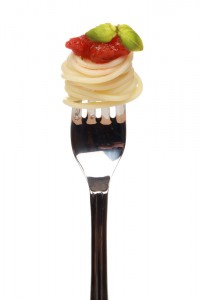A brief history of pasta
A brief history of pasta
A brief history of pasta
-
Hannah
-
Hannah
 ‘Life,’ said Italian director Federico Fellini, ‘is a combination of magic and pasta.’
‘Life,’ said Italian director Federico Fellini, ‘is a combination of magic and pasta.’
To all the countries Italians have emigrated, they have brought with them their simple, nutritious and versatile food. These days, pasta is on the menu in many countries internationally – it’s something of a staple in the Western diet in particular. No doubt you’re well familiar with pasta dishes: lasagna, bolognaise, tortellini, macaroni, tagliatelle – with some 310 specific forms of pasta to choose from, the list is long! But how much do you know about the origins of this food you likely consume often? Today I’m taking a quick look at the history of pasta.
- Inspired by the Chinese noodle? Contrary to popular myth, Marco Polo did not introduce pasta to Italy, having discovered it on his travels in China. In fact, evidence suggests that it originated in Sicily, inspired by the influence of Arabs who invaded in the eighth century. (Macaroni, interestingly, comes from the Sicilian word for kneading dough energetically.)
- Drying out. You may expect dried pasta to be a recent development, in line with mass consumerism, but in fact as early as the thirteenth century Italians were drying their pasta. It was the drying process that caused the wide uptake of this food in diets across Italy, because it meant the food was at once nutritious, easy to cook, cheap and storable for long periods of time (up to a year; ideal for sailors, hence it was taken all around the world).
- Sauce, anyone? For many people, pasta and tomatoes go hand in hand – just think of the number of pasta dishes that are tomato based. But for a long time, it was very much a case of ‘never the twain shall meet’. Pasta was eaten plain, with no sauce, and with the hands. In fact, many people thought tomatoes, discovered in the New World, were poisonous, and it wasn’t until the nineteenth century that some brave soul took the plunge. The result, as they say, is history: pasta served, or cooked, in all manner of sauces. Now the upper classes, who of course preferred not to eat meals with their hands, could embrace the food too – and the fork evolved as tool for all, upper class and peasant, as a means of twisting spaghetti.
- From hand to machine. In the 1600s a pasta manufacturing process was developed with the creation of the extrusion press. In 1740, Paolo Adami, was granted the license to open the first pasta factory in Venice, and come 1867 the Buitoni Company, known to this day as a pasta brand, was formed. Such pasta makers have been variably known through Italian history as lasagnare, vermicellai and fidellai.
- Spaghetti grows on trees… In 1957, pasta was growing in popularity, but it wasn’t yet the widespread foodstuff it is today in Western culture. That’s how the BBC was able to perpetuate an April Fool’s Day hoax: it ran a Panorama piece about a bumper spaghetti harvest in southern Switzerland depicting a family picking pasta off ‘spaghetti trees’. Many readers were entirely fooled – they even called the BBC wanting to know how to grow their own spaghetti tree (supposedly, the phone operators told them to ‘place a sprig of spaghetti in a tin of tomato sauce and hope for the best’!).
Today, the Italian love for pasta is such that the average person is estimated to eat more than sixty pounds of pasta each year. Duram wheat is grown in abundance for pasta, and yet demand outstrips production, and Italy has to import wheat to keep people happily stocked up on spaghetti. Pasta preparation is taken seriously – and if you want to enjoy pasta at its best, you’ll make like the Italians and follow these golden rules:
The Pasta Rules
1. Fresh is best. Forget mass-produced dried pasta – make your own!
2. Cook in salted water. Good pasta does not contain salt, so you must add it to the water while cooking.
3. Serve al dente. Pasta shouldn’t be soft, but a little firm.
4. Keep it simple.Traditional Italian pasta dishes have a few ingredients only – but make sure those ingredients are the very best you can buy.